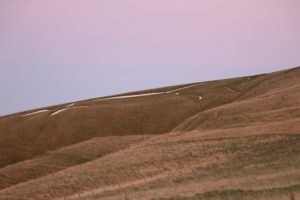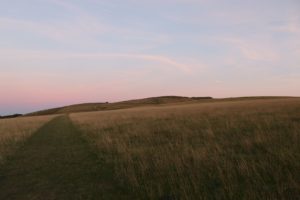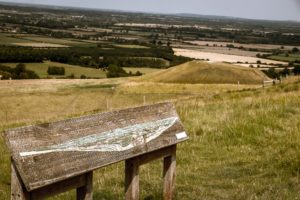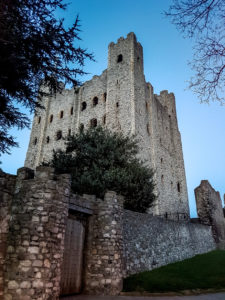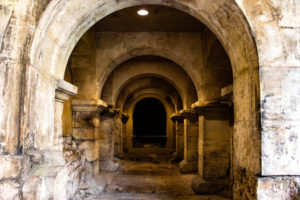The Uffington White Horse is a prehistoric hill figure, formed from deep trenches filled with crushed white chalk.
The figure has long been presumed to date to “the later prehistory” – the Iron Age (800 BC-AD 100) or the late Bronze Age (1000–700 BC). This view was generally held by scholars before the 1990s, based on the similarity of the horse’s design to comparable figures in Celtic art. This theory was confirmed following a 1990 excavation led by Simon Palmer and David Miles of the Oxford Archaeological Unit: deposits of fine silt removed from the horse’s ‘beak’ were scientifically dated to the Late Bronze Age, sometime between 1380 and 550 BC. They also discovered the figure was cut into the hill up to a meter, not simply scratched into the chalk surface.
The medieval Welsh book Llyfr Coch Hergest (Red Book of Hergest, 1375–1425) states: “Gerllaw tref Abington y mae mynydd ac eilun march arno a gwyn ydiw. Ni thyf dim arno.” This translates as “Near to the town of Abington there is a mountain with a figure of a stallion upon it, and it is white. Nothing grows upon it.”
